
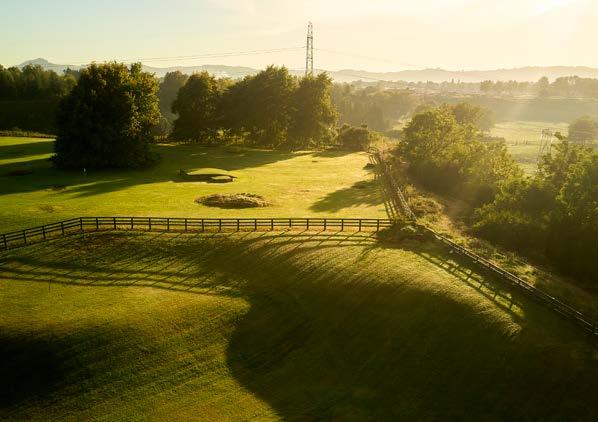



New Zealand is a special place to visit, travel and study. It has beautiful beaches, lush forests, snowy mountains, rolling farmland, vibrant cities and towns, and friendly, welcoming people.
The population of New Zealand is around 5 million people.
New Zealand is a very popular place for international students. We have an excellent education system that is recognised around the world, and our teachers and educators genuinely care about you and your success.
We are very glad you are coming to New Zealand and joining St. Peter’s. Please ensure you read all of the information thoroughly before your arrival to ensure that you are well prepared for starting at St. Peter’s.
We hope you enjoy your time here. You will have opportunities to learn different things, see amazing places, and make new friends.
New Zealand is a relatively temperate country; however, it does get colder the further south you travel. January and February are typically the warmest months of the year, with July being the coldest.
St. Peter’s is based in Cambridge, New Zealand. Cambridge is in the Waikato region in the North Island. Summers in Cambridge are warm, and winters can be cold, windy and rainy. But overall, the temperature is very moderate.
It can also be a bit foggy in the colder months, but it usually disappears around 11:00am and returns early evening.
Weather in New Zealand can change unexpectedly. Because of this, you should be prepared for changes in weather and temperature, particularly if you’re doing something outdoors such as hiking.
You can check the weather and climate in your region on the MetService website.



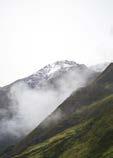
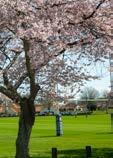
December - February
Average daytime temperatures
20-25°C (68-77°F)
March - May
Average daytime temperatures 17-21°C (62-70°F)
June - August
Average daytime temperatures 12-16°C (53-61°F)
SeptemberNovember
Average daytime temperatures 16-19°C (61-66°F)
New Zealand has very safe banking options. It’s a good idea to open a bank account here rather than keeping large amounts of cash with you. Many New Zealanders don’t carry cash and instead use their bank cards (known as EFTPOS or debit cards) to pay for everything.
EFTPOS, debit and credit cards (including international) will work if you have a four-digit PIN code. Please check if your card is compatible with your bank before leaving home.
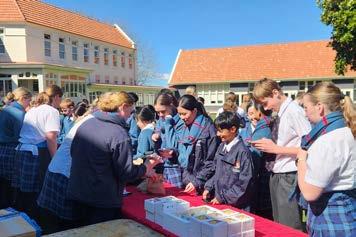
Automated Teller Machines (ATMs) are available at banks, on main shopping streets and in malls to withdraw cash.
Please be vigilant with your PIN code and do not share this, or your online banking password, with anyone.
Most banks are open from 9:30am–4:30pm Monday to Friday. Many Kiwis do most of their banking online or use an app on their phone. All New Zealand banks offer online banking.
St. Peter’s Cambridge
The currency used in New Zealand is the New Zealand dollar (NZD) and is made up of $5, $10, $20, $50 and $100 notes, and 10c, 20c, 50c, $1 and $2 coins.
The value of the New Zealand dollar changes against other currencies daily. Foreign currency can easily be exchanged at banks, some hotels and Bureau de Change kiosks which are found in international airports and most city centres.
You can find out currency conversions on this website.
There is no restriction on the amount of foreign currency you can bring in or take out of NewZealand. However, if it is more than $10,000 you must complete a Border Cash Report.

Before travelling to New Zealand, you need to make sure your passport is valid for at least three months beyond your expected departure date. If you are coming from a country that needs a New Zealand visa to enter, please be sure to apply in advance.
International students typically need a Fee-Paying Student Visa to study full-time in New Zealand. With this visa, you can study full-time at the course stated on your visa – this includes schools, tertiary, and English language study. Student visa conditions require you to attend the place of study endorsed on your visa.
For more information on the types of visas available, visit the Immigration New Zealand website.
When you arrive in New Zealand you will need to complete a New Zealand Traveller Declaration (NZTD). The NZTD collects travel, customs, immigration and biosecurity information. You can complete a digital declaration at www. TravellerDeclaration.govt.nz or by downloading the NZTD app.
To make your arrival easier, do your digital declaration before your flight to New Zealand. The earliest you can submit your declaration is 24 hours before you start your trip to New Zealand. It needs to be submitted by the time you reach passport control in New Zealand. Questions are available in multiple languages, but all answers must be in English.
Your declaration is linked to your passport and is checked when you arrive at the eGate or by a border officer.
Your flight into New Zealand will land in either Auckland, Wellington, or Christchurch. The process into the arrival area is the same at all airports:
1. After disembarking the plane, follow the signs to passport control or ask a border officer if you need help.
2. If you have completed your declaration online, your declaration will automatically be checked when you scan your passport at the eGate or when it is checked by a border officer.
3. You can no longer make any changes to your digital declaration after you have gone through passport control. If you have forgotten to declare something, you will need to talk to a border officer.
4. Your bags may be x-rayed and inspected. If you are carrying a restricted or prohibited item, it is better to declare it otherwise you may be fined or prosecuted. Remember it is better to declare anything you are unsure about.
5. Once you have been cleared by Customs and Biosecurity you will walk through the arrival doors.
6. Welcome to Aotearoa New Zealand!

All food items brought into New Zealand, even the smallest amount, need to be declared on your Traveller Declaration. These items include:
• Meat
• Eggs
• Dairy products
• Dried mushroom and fungi
• Honey and honey products
• Seeds for human consumption and processing into food
• Nuts, spices, herbs and un-popped popcorn
• Dried, cooked or preserved fruit and vegetables
• Fresh fruit or vegetables
If you do not declare your items, you will be fined around NZD$400 and the items will be taken from you.
St. Peter’s will provide you with emergency contact details and people if you need help. Staff are very good at caring for students from all around the world.
Please talk to someone at the school about any questions you have, or if you have any problems or worries ahead of your arrival.
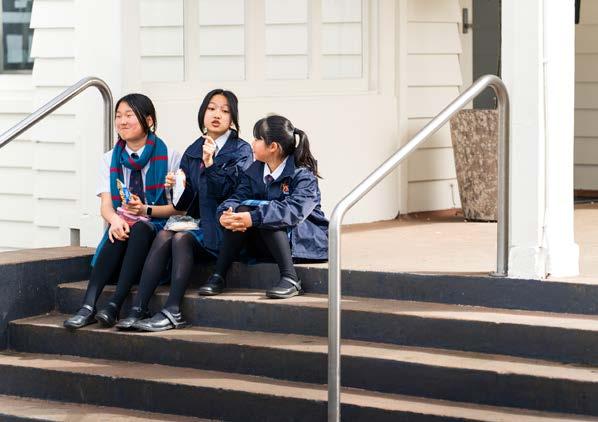
Below are some items we suggest you pack for your time in New Zealand. You will need to bring different things to accommodate the different weather conditions and activities you might be doing while you are here.
• Swimwear
• Sun hat, sunglasses and sunscreen
• Shorts and/or skirts
• T-shirts and/or short sleeve shirts
• Jumper and/or sweatshirt
• Light raincoat
• Good walking shoes
• Your choice of other clothing and footwear
• Warm waterproof jacket
• Jumper and/or sweater
• Long pants and/or jeans
• Long sleeve shirt and/or t-shirt
• Scarf, hat and gloves
• Good walking shoes
• Your choice of other clothing and footwear
• Umbrella
• Toiletries
• Towel
• A few personal belongings to help your room feel like home
If you are bringing anything valuable (i.e. camera, phone, laptop, etc.), you MUST have copies of the purchase price (proof of purchase or receipt) as you will not be able to claim for insurance if they are lost or damaged.
It is compulsory for international students to have travel and medical insurance. This means if you must see a doctor, you can claim back the costs of your appointment and medication. If you lose something (e.g. your camera) then this can be claimed too.
If you go to the doctor in New Zealand, you will need to pay for the visit and then claim the cost back for reimbursement with your insurance company by providing them your receipt.
Please note that if you have a current medical condition, we MUST know about this for insurance purposes.

When you arrive at St. Peter’s School in Cambridge, you will most likely be staying in one of the boarding house dormitories on the campus at school. During the school holidays and Leave Weekends the dormitories are closed, and we have homestay families that care for our international students.
Here is some useful information to help you when you are at school.
If you are living in one of the boarding houses, it takes about 2-4 minutes to walk across campus to school.
If you are living with a homestay family, you will either catch a bus to school or your homestay family may bring you to school.
All boarding students have access to the school dining hall. You can visit the Dining Hall for breakfast, lunch and dinner each day and sit together. It’s a great way to catch up with friends.If you are living in a homestay, you will be able to have lunch in the dining hall. You will have breakfast and dinner at home with your homestay family.
St. Peter’s Cambridge
Students are not permitted to use their phones at school between 8:10am–3:20pm. You can carry your phone, but you are not to use it to communicate with others until school finishes.

In New Zealand many students spend time with their friends after school and on the weekend.
If you are invited to visit a friend’s home, please ask their parents first to arrange a day and time. More information will be provided on your arrival at St. Peter’s.
By spending time with friends, you will widen your cultural experience, improve your English and, of course, have fun.
Please ask for help if you need it.
If you are not sure about anything, please make sure you ask. We encourage you to ask questions if you need help, and to talk to us if something upsets or confuses you, or makes you angry.

St. Peter’s will have an orientation programme to introduce you to your new school. This will help you understand your new school and prepare.
You will be given information on:
• Your school uniform – clothes to wear to school
• Timetables and classes – what you will do during the school day
• Your teachers
• What you can do during morning and lunch breaks
• Activities during school time and after school.
There are four school terms running from late January to mid-December with two-week breaks between them and a six-week summer break at the end of the year.
Term 1: Late January to early April, followed by a two-week break.
Term 2: Mid-April to early July, followed by a two-week break.
Term 3: Mid-July to late September, followed by a two-week break.
Term 4: Mid-October to mid-December, followed by a six-week summer holiday.
The term dates can be found on our website www.stpeters.school.nz/term-dates

St. Peter’s is well-equipped with computers, internet and technology.
There is lots of room for outdoor play and sport. St. Peter’s has a beautiful campus with extensive playing fields, golf academy, an equestrian centre and swimming pools.
Our teachers support a wide range of activities during after school hours, such as coaching sports teams, leading drama clubs, music, and cultural activities.
There are also many opportunities to take part in educational trips and visits.
• Follow the school rules
• Try new things – give it a go
• Try and make some friends from New Zealand
• Use your English skills – have a try
• If you are not sure about anything, please ask.
Physical discipline (e.g. smacking, caning or strapping) of students is not allowed in New Zealand. School punishments usually involve detention (staying in at lunchtimes or additional work).
New Zealand is known to be a very safe country to live and travel in, though it is always a good idea to keep yourself safe by:
• Taking care of your property at school
• When crossing the road, look to your right first, then left, then right again, before you cross
• Use pedestrian crossings when they are available, and always check the cars have stopped first before crossing
• Keep your mobile phone and wallet in a safe place, such as a bag or pocket
• Be aware of people around you when using ATM machines
• Don’t carry large amounts of money, valuables or expensive jewellery with you
• At school, don’t leave any money or your phone in your school bag
• If some of your possessions get lost or are stolen, please tell your teacher so they can help you.
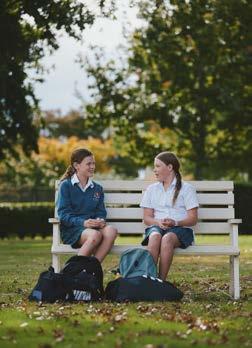
Now that you are in New Zealand you will see that people and customs may be very different from what you are used to. Just remember:
• During your stay you may have some difficulties and misunderstandings. This is normal and OK. Keep calm and have an open mind to finding solutions to problems you may have.
• There will be new food and a new language to get used to. You might feel lonely, find it difficult to study, and get used to your new environment. You may get tired of speaking and listening in English all the time. This is also OK.
• When possible, try and spend time with New Zealanders. They will be happy to share their culture with you and answer questions.
• Find ways to keep in touch with family and friends at home. Sometimes you just need to talk with someone who knows and understands you.
Congratulations on taking a risk and challenging yourself to travel and stay in a new country and experience a different culture.
We wish you a happy and safe time in New Zealand and at St. Peter’s. We hope you enjoy trying and seeing new things, making new friends, sharing information about you, your country and culture and learning more about New Zealand, its culture and people.

stpeters.school.nz
info@stpeters.school.nz
1716 Cambridge Road, Cambridge 3283